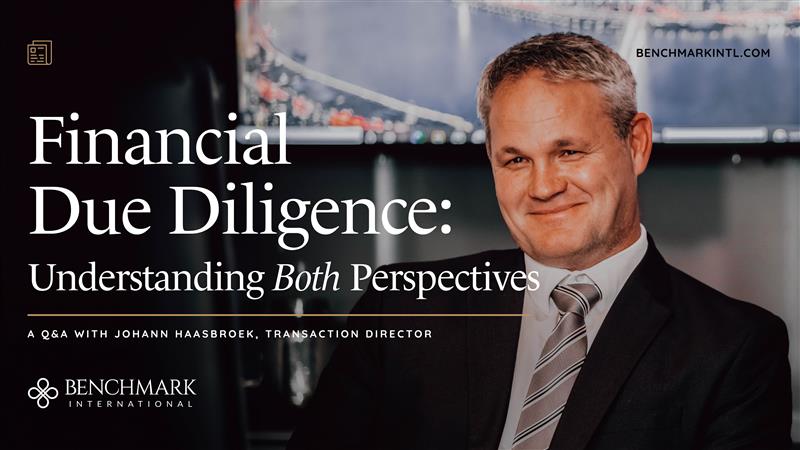When determining the best time to sell or exit a company, unfortunately nobody has a crystal ball. However, there are several circumstances that should be considered, from fundamental business positions to external influential factors.
The state of the M&A market is among the most significant factors in a decision to sell a business. The market held steady from 2015 to 2017, and optimism skyrocketed in 2018. In 2019, the market dipped slightly but remained strong in deal volume and value, with a wave of multi-billion-dollar megadeals being completed.
While some expect a modest drop in global M&A value in 2020 due to what is perceived as inevitable economic correction after a lengthy, seemingly unstoppable up-cycle, many experts predict that little change is expected due to sustained economic growth, low unemployment, low inflation, high consumer confidence, and strong corporate earnings. Companies still have a need to diversify their portfolios, acquire talent, and innovate technologies in order to stay competitive—all needs that are best addressed through M&A. Also, plenty of capital is available and private equity has amassed the dry powder that can drive larger deals, even in the event of an economic downturn.
Additionally, there is potential for more aggressive M&A strategies earlier in the year to get ahead of a potential downturn and downgrade in valuations. Companies that have proven to perform well during times of recession may be especially appealing targets.
The 2020 U.S. Election
Regarding a potential downturn, one of the major factors that play into the state of this year’s M&A market is the upcoming November 2020 presidential election in the United States and the issue of impeachment of the current president. History indicates that economies typically perform well in election years. However, as uncertainty looms contingent upon the results of the election when it comes to topics such as trade and regulation, acquirers may become hesitant and the M&A market could lose momentum leading up to November, with the market remaining slow in the months following, depending on the election results.
Another matter affected by the election results is capital gains taxes, which is a matter of concern if you are selling a company because how much profit you yield from the sale will be taxable. Some presidential candidates are proposing higher taxation of the highest-income taxpayers’ accrued wealth and income, and this includes capital gains. Most candidates’ plans would tax capital gains at ordinary income rates, with just the very top marginal tax rates varying at incomes of more than $488,850.
The closer the election nears, the more every single day counts. If you hope to sell, the sooner you initiate the process, the better, as most M&A deals take several months.

Brexit
As of January 31, 2020, the United Kingdom is officially no longer part of the European Union, but a second round of negotiations will continue with the goal of reaching a deal by the end of 2020. With lessened political uncertainty now that an initial Brexit deal has been made, there is heightened confidence in deal-making activity. The inability to make a second deal by the end of the year will mean higher costs and barriers to trade.
The Brexit situation is affecting changes to M&A strategies. M&A could be used to secure an operational presence in the EU to maintain access to European markets. M&A could also facilitate access to markets outside the EU. Additionally, some companies could be facing new pressures that can directly impact share prices.
The Boomer Retirement Wave
While it seems as though we have been talking about it for years, the Baby Boomer generation remains a factor in 2020.
According To Pew Research Center population data, 10,000 Baby Boomers will turn 65 on each day of this year.
In the U.S. alone, Baby Boomers own 2.34 million small businesses, and employ more than 25 million people. This aging ownership pool points to a flood of M&A activity in the lower and middle markets this year, especially in certain sectors such as those that offer professional services.
As this population retires, there will be an increased need for consolidation, succession planning, and exit planning. If Boomers do not properly plan for these scenarios, it could result in an economic crisis that in turn affects millions of jobs. Also, most of these business owners have the majority of their net worth tied up in their company. This means that if the company should lose value, so does the owner’s ability to retire.
The unfortunate reality is that the majority (75%) of owners of small to mid-sized businesses choose to procrastinate and do not have a plan in place. If you are a part of this generation, you should most certainly already have your plans for the future underway. Even if you are not a Boomer and are considering selling, this is the time to get ahead of the massive wave of businesses that are expected to hit the market this year.
Are You Ready to Sell?
If you are considering selling your business, we encourage you to enlist the expert M&A guidance of Benchmark International’s team to create your growth strategy, exit strategy, or company sale for maximum value. The time to start planning is now.
READ MORE >>
 Benchmark International
Benchmark International  Benchmark International
Benchmark International 










































